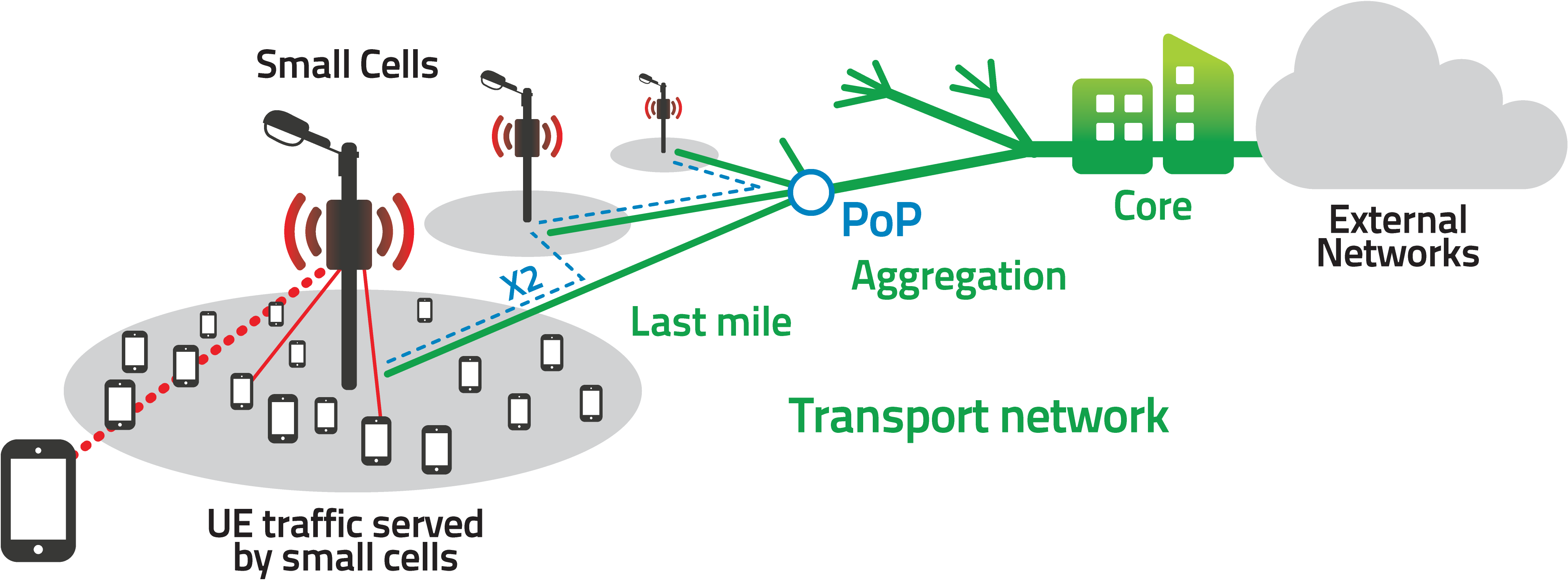Small Cell Backhaul: Is Your Network Ready?
By: Patrick Ostiguy

As low-power, short-range small cells emerge as the technology of choice for improving mobile network coverage and capacity, operators are being driven to ensure subscribers have an enhanced quality of experience utilizing small cells or access points (APs) to fill the gaps and Not-spots with traditional macro network. Backhaul network performance is a significant contributing factor to the end-user experience. But with the potential introduction of thousands of new small cells in the network, conventional methods of assuring mobile backhaul performance will not be economically feasible. The challenge that mobile network planners and field operations personnel face is how to validate and monitor small cell backhaul performance during initial deployment and following service turn-up without adding significant capital or operating expenditure.
The backhaul in a small cell environment has significantly different deployment characteristics compared to macro backhaul networks, yet the requirement for testing, troubleshooting and performance monitoring remains the same. The basic difference is that the backhaul transport network will need to support a much larger number small cells that is expected to eclipse the number of macro sites today. Also, small cell backhaul is constrained by cost, size and location to a far greater extent than traditional macro networks. These limitations have forced operators to consider using lower cost backhaul solutions in addition to traditional fiber or microwave for the last-mile connection between the small cells and the macro sites or other aggregation point.
Whether the small cell multi-standard access points support 3G, LTE, Wi-Fi, or some combination, the backhaul options that operators are considering, and in some cases already using, are fiber (such as PON), various forms of DSL, DOCSIS, and a plethora of new wireless technologies operating in a range of licensed and unlicensed frequency bands, such as sub-6GHz, 60MHz, 70GHz and 80GHz. But not one of the many technology options will be able to meet all of the small cell backhaul requirements related to cost, coverage and capacity. That means operators are likely to use a mix of different fixed-line and wireless technologies for small cell backhaul. Figure 1 illustrates the concept of small cell backhaul networks.
[Figure 1. Small Cell Backhaul Network Concept]

Source: NGMN Alliance
As operators adapt to using an array of backhaul technologies to reach numerous distributed small cells, they also need to rethink their transport network performance requirements and how they are measured at the point of service turn-up and during on-going monitoring. Just as with testing and monitoring performance of macro backhaul networks, the backhaul connections to the small cells need to be activated, verified and monitored; they require “birth certificates” to ensure they meet an operator’s specified limits on KPIs, such as throughput, delay (latency), packet delay variation, jitter, packet loss and availability. Whether operators build their own backhaul network or lease transport capacity from a alternate access provider (AAVs), they need accurate performance assurance for on-going service monitoring and SLA validation.
Conventional methods of producing birth certificates for macro backhaul involve installing demarcation equipment, such as NIDs and iNIDs, at the macro cell site and sending a qualified technician to run tests on the backhaul links. But while this can be cost-justified in the case of a macro cell sites serving several hundred subscribers, this kind of CAPEX and OPEX outlay cannot be sustained for a single small cell supporting a few tens of subscribers.



















